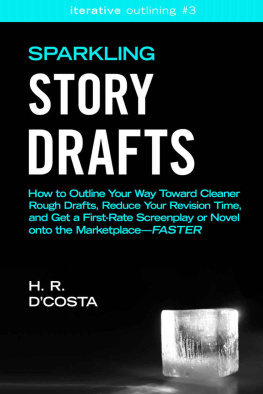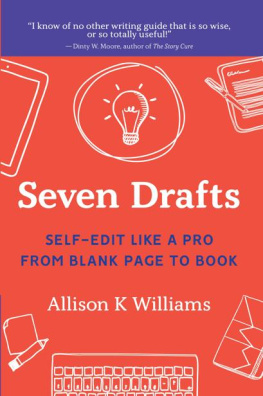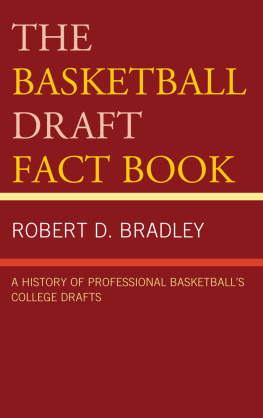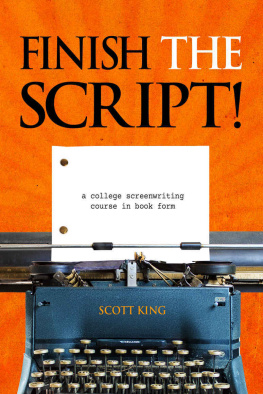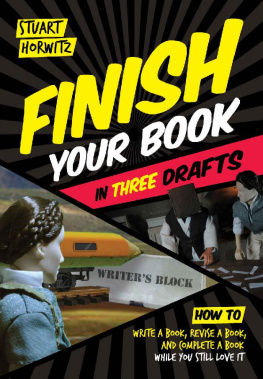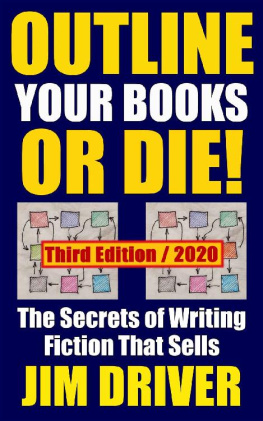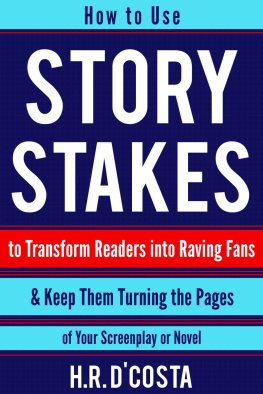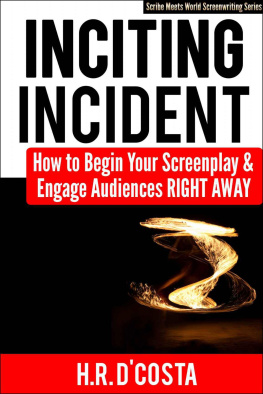Sparkling Story Drafts
How to Outline Your Way Toward Cleaner Rough Drafts, Reduce Your Revision Time, and Get a First-Rate Screenplay or Novel onto the MarketplaceFaster
{ Iterative Outlining #3 }
Kindle Edition, version 1.0
H. R. DCosta
Copyright 2018 H. R. DCosta. All rights reserved.
Cover image is adapted from Day 47: Prism by Sean Freese, which is licensed under CC BY 2.0.
scribemeetsworld.com
Story Structure Made Simple
Introduction
More, more, more.
The more screenplays or novels you havethe more product you can put onto the marketplacethe more money youll make.
Thats the general consensus, at least.
If youre a screenwriter, you know that Hollywood is a land of What else have you got? If youve written five market-ready screenplays, then you can answer that question confidently, easily. Youre in a much better position to capitalize on the stroke of luck that brought an agent to your door.
However, if you only have one script, the picture looks different. You cant answer that question; you dont have anything else. You may blow a major opportunity to get your career off the ground.
If you spent thousands of dollars to get this opportunity (say, by paying for tickets to an industry conferencethe main event, plus all the optional networking parties), then the picture looks even more grim. You havent just lost an opportunity. Youve lost money, too.
If youre a novelist (whether traditionally published or self-published), you know that every novel you write is like a breadcrumb that leads back to you. Maybe a reader will find you through the second book you published. Maybe through your third or your fifthor more.
Regardless, every book boosts your discoverability.
Every book creates a new chance for readers to discover you and become life-long fans of your workeventually, perhaps, turning you into a household name.
Thats not all. More books equal more marketing opportunities. For instance, a temporary sale, where one of your books is discounted down to 99 cents or $2.99, can bring a whole new flock of readers to you.
Using loss leaders is a solid sales strategy. (You know its true, cause its worked on you. After a free sample at the grocery store, a wedge of gourmet cheesewhich you never intended to buyended up in your shopping cart.)
But it only works to your best advantage when youve got a robust backlist.
If readers enjoyed your heavily discounted book, they should go on to buy multiple books written by youall at full price. The loss leader wont feel like a loss. But if you only have one other book for sale (or, even worse, no other books), then it will.
Without going into particulars, paid advertising operates on the same principle. The more titles you have on your backlist, the more likely youll make back the money you invested in an ad.
In sum, whether screenwriter or novelist, the more you write, the more money youre likely to earn.
Indeed, there seems to be no end to the amount of money a great idea can rake in. (Think of series and franchises like James Bond, Harry Potter, Game of Thrones, the Hunger Games, Inspector Morse, Star Wars, and Star Trek.)
Unfortunately, the same cant be said of time.
Its a limited commodity.
After all, there are only 24 hours in a day.
And producing more screenplays or more novels is not the only item on your agenda.
Oh, no. Your to-do list is lengthy and varied.
By focusing on production, you have something to sell. Excellent. But you also need to spend time learning how to market your work.
You need to learn how to pitch your screenplay without fear, without nervousness. You need to learn how to summarize your 100,000-word novel in a few paragraphs. Youve got to get a handle on social media, whose landscape seems to change dailyand thats just the tip of the marketing iceberg.
Production. Marketing. By mastering these, youll make headway toward achieving your dream, toward making a living with your writing.
However, while youre passionate about this dream, youve got additional commitments.
Youve got job responsibilities that you cant slack. Not if youre going to put food on the table.
Youve got a family whom you love, whom you want to nurture. When youre with them, you want to enjoy your time together. You want to be fully present. You dont want to multitask; you dont want your mind to be somewhere else.
Youve also got to take care of yourself. You cant run yourself ragged.
Which means that at least 8 hours of your day have to be dedicated to sleep. (And perhaps, an additional hour is dedicated to exercise.)
SoHow Can You Achieve Your Writing Goals When Several Demands Are Competing for Your TimeAnd There Are Only 24 Hours in the Day?
Heres a simplified answer: make more time for writing. Wake up half an hour earlier, and use that time to write. Instead of bingeing on Netflix, edit your pages. Camp out at a caf during rush hour and get some writing (or editing) done; drive home afterward, when traffic has subsided.
Of course, that only solves part of the problem.
Even if you manage to carve out chunks of time for writing, even if you commit to working on your draft every day, your production speed still wont be as fast as youd like. Not if you spend that half hour in the morning (or that rush hour in the caf) wondering what should happen next in your story. Not if editing your pages into a cohesive plot requires a massive overhaul of what youve written.
The key, then, is to use your writing time well .
You must use it wisely, effectively, efficiently.
You need to write quicker, you need to write betterthe first time around.
Ideally, youd write cleaner rough drafts, i.e. your first draft would be extremely close to your final draft.
Instead of being scrapped (or thoroughly rewritten), most of what you write during your sessions would end up in the final product.
What a joy that would be!
If you did that, if you became this efficient, then you could produce more product and achieve your writing goals (without neglecting your other responsibilities).
Thats not to say that you want to write a screenplay or novel every month. You know if you tried to do that, youd burn out. But if you could just double or triple your output, if you could just finish two screenplays or three novels in a year, youd be so much happier.
How to write more efficiently and boost your productivity? How to hit your writing goals?
Heres one tried-and-true solution: outline your story before writing it.
Doing so could be just the ticket. Doing so could take you closer to a perfect draft the first time aroundand save you so much time.
Let me explain.
Three Reasons Why Outlining Helps You Save Time and Be a More Efficient Writer
There are three main ways that an outline saves time and increases your efficiency. Lets go through them, one by one.
(1) You know where youre headed so you have purpose and direction when you write.
Your outline gives you a roadmap, with markers to write toward.
With it, you dont have to waste time thinking about where you want your story to go. You know that already.
With it, you can start strongand stay strong.
Usually, without a roadmap, youd start strongbut then peter out because youre unsure about what should happen next in your story. And you cant afford to peter out like that anymore, not if you want to achieve your writing goals and write more per year.
As you can imagine, a roadmap is especially advantageous when you can only write in brief snatches. With it, youll spend those precious chunks of time actually writing instead of staring at a blank page and a blinking cursor. Despite the other demands competing for your time, you can make steady progress toward hitting your word or page count.
Next page
